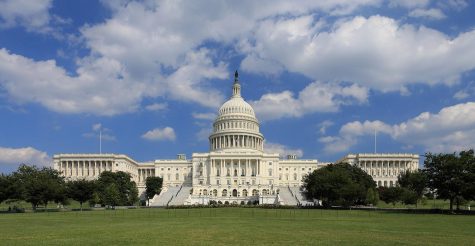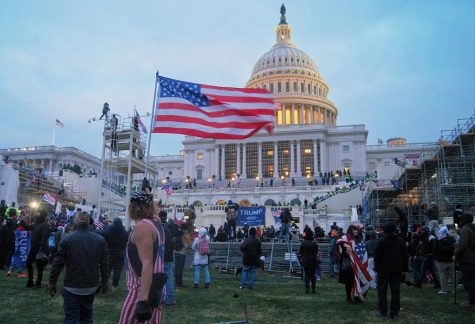An American Insurrection
January 20, 2021
 The only successful coup d’etat in the history of the United States occurred 122 years ago. In the city of Wilmington, North Carolina, a progressive southern city at the time, white supremacists used violence to overthrow the local government of recently-elected black officials. Following this year’s election of the first Black Democratic senator from the South, which also gave Democrats control of the Senate, on January 6 a white-majority mob stormed and successfully infiltrated the US capitol building.
The only successful coup d’etat in the history of the United States occurred 122 years ago. In the city of Wilmington, North Carolina, a progressive southern city at the time, white supremacists used violence to overthrow the local government of recently-elected black officials. Following this year’s election of the first Black Democratic senator from the South, which also gave Democrats control of the Senate, on January 6 a white-majority mob stormed and successfully infiltrated the US capitol building.
That day’s joint session of Congress was to count the electoral votes from the presidential election, thus finalizing former Vice-president Joe Biden’s victory. Following the nearby Trump rally, hundreds of people began to vandalize and invade the Capitol building. Earlier in the day, some Republican senators had raised objections to the election results in swing states; however, the senators were objecting to votes that had been upheld in court. As the rioters entered the building, politicians were forced to halt their sessions, evacuating to safe rooms and going into lockdown.
The mob had moved in support of former President Trump’s consistent denial and desire to quash the results of the election. Prior to the riot, Trump told his audience, “this election was stolen from you, from me, from the country.” He continued to declare, “We will never give up; we will never concede…We will stop the steal. We’re going to walk down Pennsylvania Avenue, and we’re going to the Capitol.” Just one hour later, the mob of people did just that.
Later that day, facing widespread condemnation of his actions, Trump tweeted a message to his followers, a video in which he stated, “I know your pain, I know you’re hurt. We had an election that was stolen from us [… ] We have to have peace. So go home. We love you; you’re very special.” This followed an earlier tweet from December 19 that contained the message “Big protest in D.C. on January 6th. Be there, will be wild!” Trump was one of many who had hinted, and even clearly promoted, the riot on social media. On January 8, Twitter “permanently suspended [Trump’s] account due to the risk of further incitement of violence.”
 How did a group of angry rioters make its way into one of the most important buildings in the United States? Despite the obvious plan to riot in the Capitol, even promoted by the then-President himself, the National Guard had not been deployed by the Trump administration when the insurrection began. The Capitol Police, tasked with protecting the building, was unable to stop the majority of protestors who smashed windows, scaled walls and eventually incited an armed standoff at the door to the House chamber. By the time the National Guard made it to the site later that afternoon, rioters had already entered the building.
How did a group of angry rioters make its way into one of the most important buildings in the United States? Despite the obvious plan to riot in the Capitol, even promoted by the then-President himself, the National Guard had not been deployed by the Trump administration when the insurrection began. The Capitol Police, tasked with protecting the building, was unable to stop the majority of protestors who smashed windows, scaled walls and eventually incited an armed standoff at the door to the House chamber. By the time the National Guard made it to the site later that afternoon, rioters had already entered the building.
By comparison, last June, as groups of demonstrators held a peaceful protest for the Black Lives Matter movement, a large number of National Guard troops had patrolled the Lincoln Memorial’s steps. The inequitable responses by police and military to the two events have led to the anger of politicians, journalists, and citizens. In various cities last summer, peaceful Black Lives Matter protests were met with tear gas, batons, rubber bullets, and arrests. Yet, this January, as insurrectionists in D.C. advanced past the Capitol police, John Eligon wrote in the New York Times that “officers, after initially offering resistance, mostly stood by.”
In a country where half a million people protested against a racially motivated death of a Black man by police, hundreds of white Trump supporters were able to infiltrate a sacred political complex. As now-President Biden stated in his national address after the riot, “No one can tell me that if it had been a group of Black Lives Matter protesters yesterday that they wouldn’t have been treated very differently than the mob that stormed the Capitol.”
In the days following the riot, a bipartisan call to remove Trump from power through the Twenty-fifth Amendment was rejected by then-Vice-president Mike Pence. Accordingly, the House of Representatives voted to impeach the President for inciting rioters to storm the Capitol. Despite Trump’s time in office having come to an end, Senate Leader Mitch McConnell chose not to hold the impeachment trial until after Biden’s inauguration. Now, the nation awaits as the government approaches one of the most significant transitions of power in the history of the United States.




















Gabe • Apr 30, 2021 at 12:22 PM
You say the former president encouraged the rioting but he did not at all. He never sent out any tweets saying destroy the capital, all he said was to march at the capital never to attack the capitol building. I do think the capitol building attack was a disgusting attempt to try and protest but, your representation on BLM and Antifa is too lightweight. In the article, you stated that their marches were very peaceful, in actuality costing 2 billion dollars in property and riots all this summer and still continuing. It is interesting how you only target the right for its wrongdoing, but Black lives matter, and Antifa doing so much more. The capital riot is a lot more minuscule than the 2 billion dollars and the death of 19 people. I have to stress again the capital riot was very wrong.